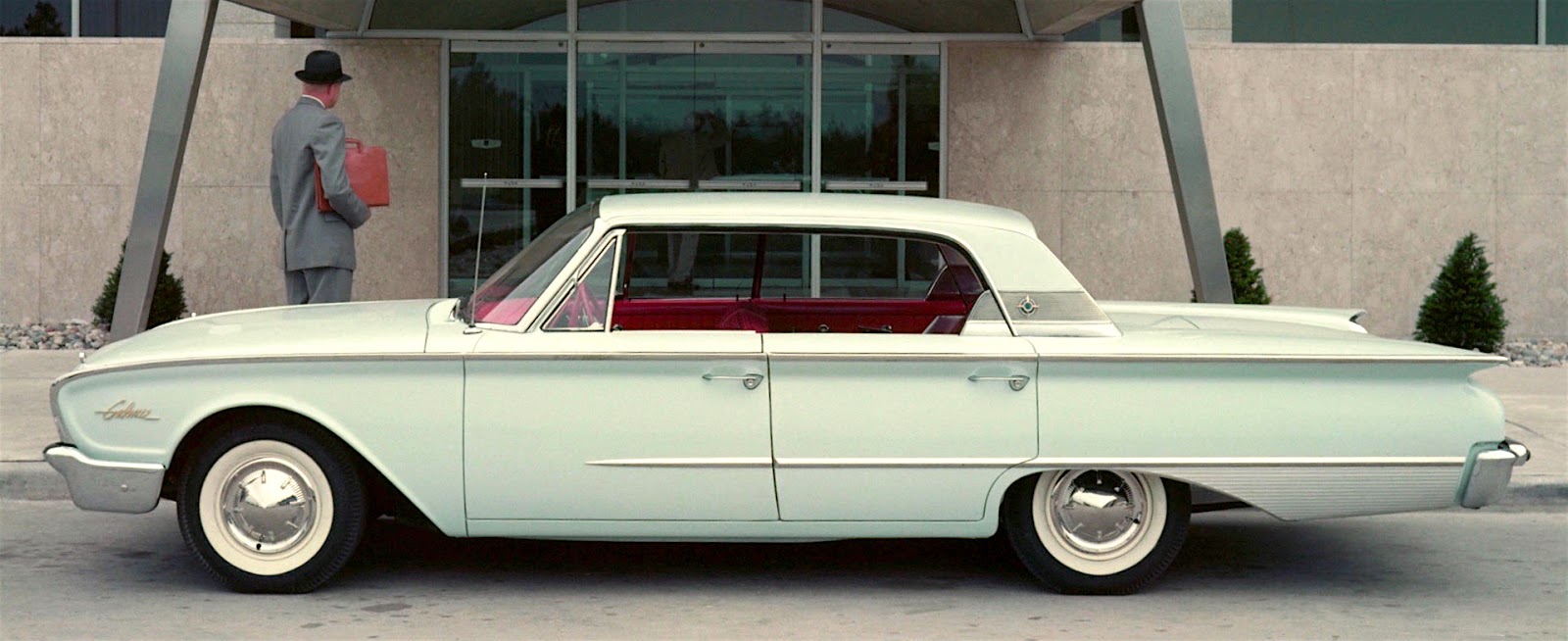I am not aware of any book-length biography of Farina, so I can't be sure how active he was in the early 1950s when he was approaching age 60. But my guess is that he was still heavily involved styling the cars his company built.
Which brings us to the strange 1952-55 Lancia Aurelia PF 200 (where PF = Pinin Farina), a Lancia model B52. A little background information can be found here and here. It is pointed out that the PF 200's styling seems to have been inspired by jet fighters -- the almost-round grille opening looking similar to nose air intakes of the Russian MiG-15, the French Dassault Ouragan, the American F-84 Thunderjet and others.
Farina, it seems, was temporarily afflicted with the same disease as Detroit stylists. Car design having evolved from collections of discrete items (separate headlights, fenders, trunks, hoods, etc.) to all-encompassing "envelope" bodies (the 1949 Ford, for instance), stylists began looking at jet fighters, science fiction space ships and even insects for inspiration. At this time, Italian designers tended to treat automobiles as automobiles and not rocket ships. However, they did stray from time to time, and the PF 200 is a good example of that. At least only about half a dozen were ever built.
This is a 1952 PF 200 Coupé. Its wheelbase is long and the passenger greenhouse is comparatively short because the car only seats two people. The wraparound backlight assembly seem to be inspired by 1947-52 Studebaker Starlight Coupes. The trunk lid tapers in a boat-tail manner, though storage space might have been reasonably adequate, given that the sheet metal forward of the lid extends well into the greenhouse. There is an odd decoration forward of the rear wheel opening. It is associated with an air intake presumably for brake cooling, though its openings are mere slits. In summary, the car is poorly proportioned and details are mostly odd and badly located. What on earth could Farina been thinking?
Here is a PF 200 spider ("speeder," roadster) from about 1953. The body is about the same as that of the lower body of the Coupé in the photos above. The spider's windshield is not curved; rather, it is flat and can be pivoted down. Note the different front protection arrangement (though neither car has more than sketchy frontal protection).
This set of photos shows a 1953-vintage PF 200 Coupé. Internal grille details differ as does the front bumper arrangement (it's slightly improved). No rear brake air intakes.
The main difference from the 1952 PF 200 is the treatment of the aft part of the greenhouse. Rather than the Starlight Coupe- like backlight, we find a nearly-flat backlight nestled between sail panels that extend to the rear of the car. Quarter window positions are blanked, though there seem to be four louvres to help exhaust cabin air. The boat-tail trunk lid styling is also gone. The poor-quality lower photo was taken at the 1954 Paris auto show.

















































